SURGICAL PROCEDURE
Abdominoplasty
TREATMENT OVERVIEW
Abdominoplasty, a “tummy tuck,” is a specialised surgical procedure focusing on the abdominal region. Its primary objective is to remove excess skin and adipose tissue while simultaneously tightening the underlying abdominal muscles.
The procedure is particularly beneficial for individuals who have undergone significant life changes such as substantial weight loss, multiple pregnancies, or the natural ageing process, all of which can lead to a lax abdominal wall and sagging skin. By undergoing abdominoplasty, patients can achieve a more youthful, firmer, and flatter abdomen, enhancing their physical appearance and overall quality of life.

THE PROCEDURE
Initial Consultation: The abdominoplasty experience begins with an in-depth consultation with a board-certified plastic surgeon. This initial meeting serves multiple purposes: a thorough physical examination, possibly augmented by imaging studies like ultrasound or MRI, to assess the extent of the excess skin and adipose tissue; a discussion platform for addressing your specific concerns and aesthetic goals; and an opportunity for the surgeon to provide a tailored surgical plan based on your unique anatomical and physiological needs.
Abdominoplasty is generally performed under general anaesthesia to ensure patient comfort and optimal surgical conditions. However, regional anaesthesia options may also be available and can be discussed. The choice of anaesthesia is a collaborative decision involving you, your surgeon, and the anesthesiologist, and it takes into account various factors such as your overall health status, any existing medical conditions, and your comfort and preference.
The abdominoplasty procedure involves a carefully planned incision, usually made horizontally between the pubic hairline and the navel. The surgeon removes excess skin and fat through this incision and may employ sutures to tighten lax abdominal muscles. Once the desired contour is achieved, the remaining skin is meticulously repositioned and sutured in place. Postoperative care is equally important and involves the application of topical antibiotic ointments and sterile dressings to minimise the risk of postoperative infections.
AT A GLANCE
- Surgery: 4 Hours
- Time off work: 3 Weeks
- Before you drive: 3 Weeks
- Return to Gym 6 Weeks
- Lift a small child: 6 Weeks
- Final Results: 6 Months - 1 Year
Actual return to activity times will be discussed and agreed with your Surgeon.
BEFORE & AFTER
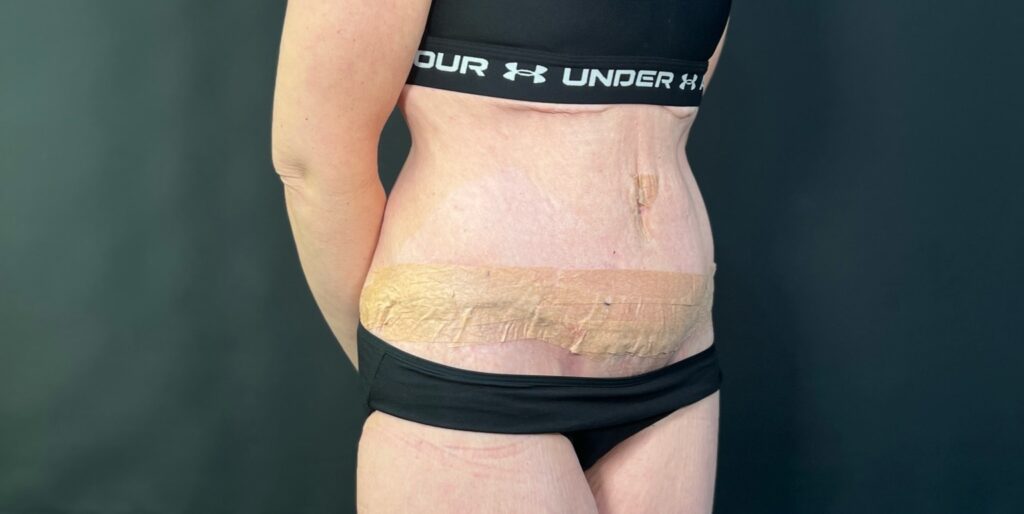


8 weeks POST OP

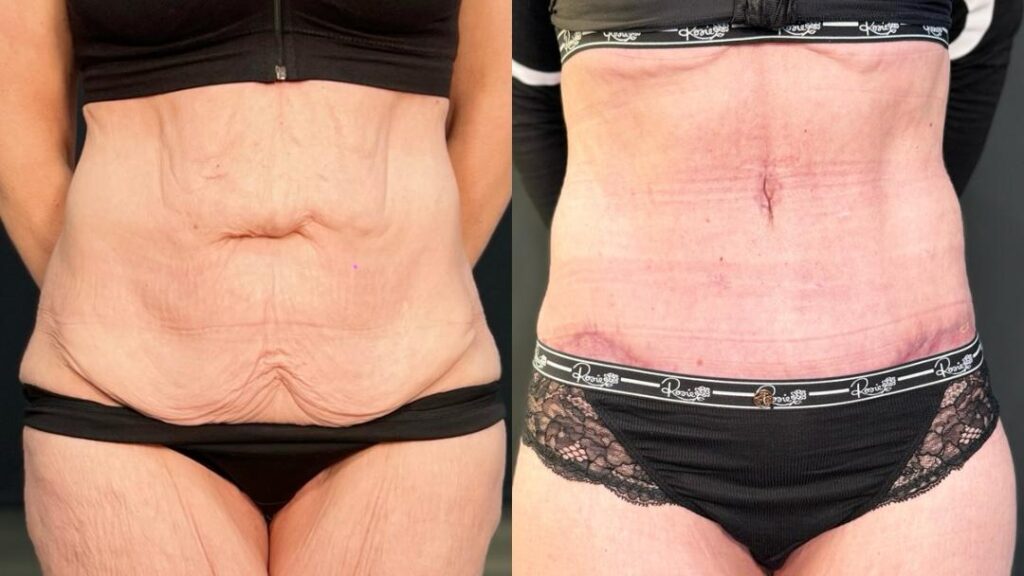
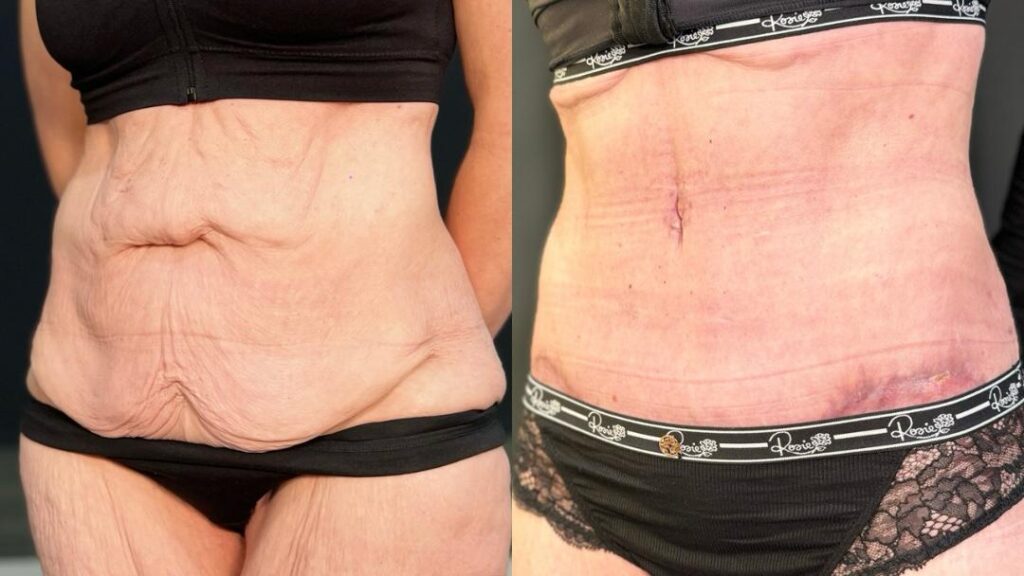

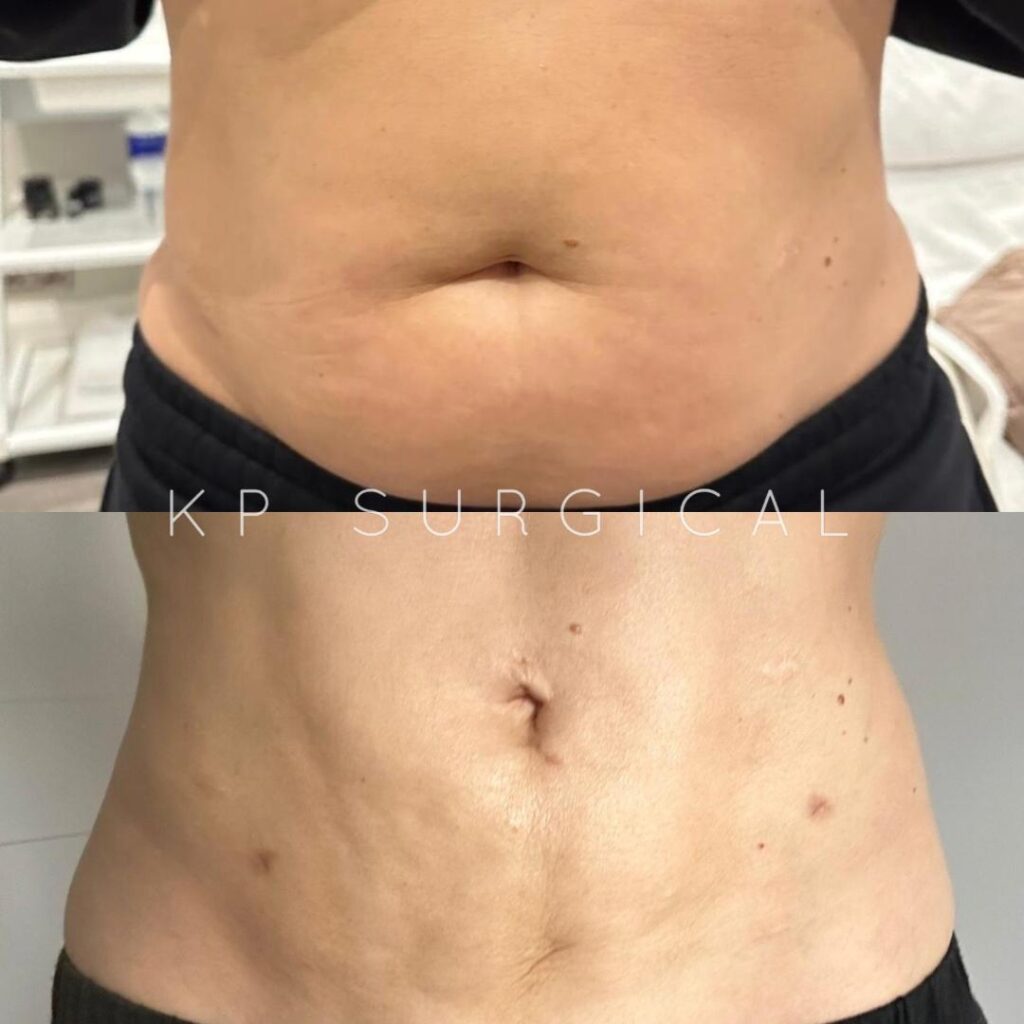
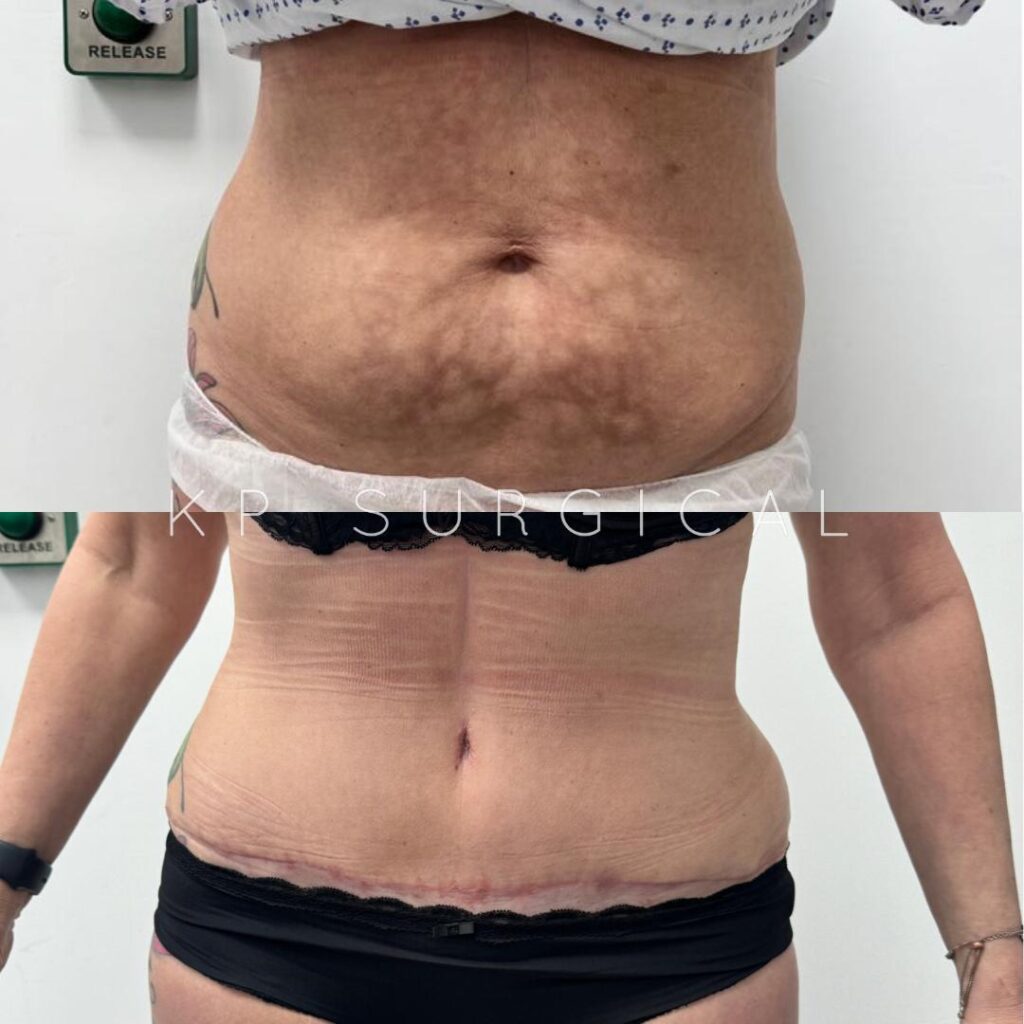
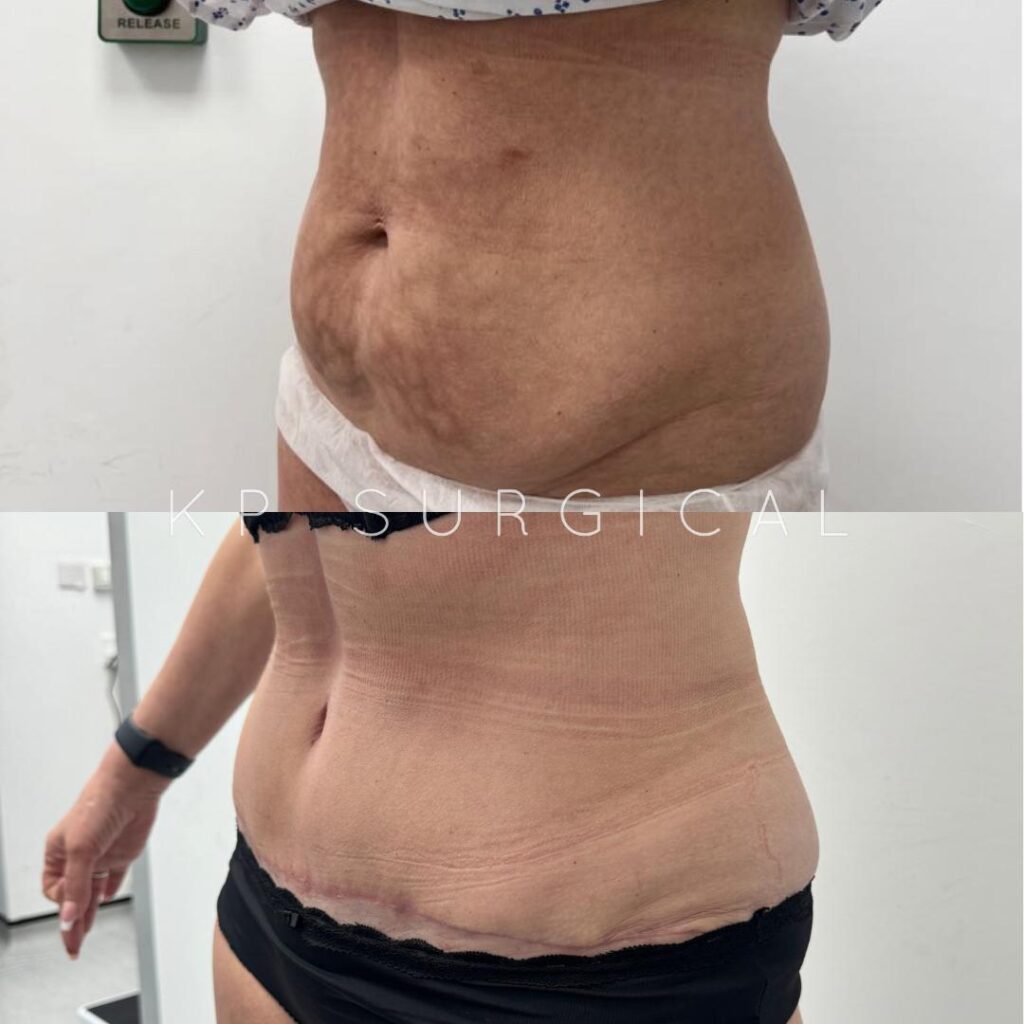
THE BENEFITS
You may choose to undergo abdominoplasty for a number of reasons:

RISKS
THINGS TO AVOID
AFTER SURGERY
- Heavy lifting or strenuous exercise for 2-3 weeks
- Sleeping on your stomach initially
- Smoking and alcohol consumption
- Prolonged sun exposure to the surgical area
- Tight or constrictive clothing over the surgical area
- Spicy foods that may cause digestive issues
- Over-the-counter medications that can affect blood clotting, such as aspirin
- Swimming pools and hot tubs to avoid infection risks
Post Op
AFTERCARE
- Medication Regimen: Postoperative care often involves a combination of antibiotic ointments to prevent bacterial infections and anti-inflammatory medications to manage pain and swelling. Adherence to this medication schedule is crucial for optimal healing.
- Environmental Precautions: Minimising exposure to direct sunlight during the initial healing phase is essential to prevent hyperpigmentation or darkening of the newly healed scars.
- Nutritional Guidelines: A balanced diet rich in essential nutrients like Vitamin C, zinc, and protein can expedite healing. Adequate hydration is also crucial for optimal recovery.
- Regular Follow-Up Visits: Scheduled follow-up visits with your surgeon are essential for monitoring your healing process, assessing the long-term results, and addressing any concerns or complications that may arise.

